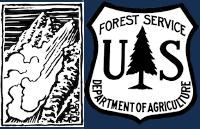24-25
Texas Meadow
Skied a lap on Texas Meadow north of Bridger this afternoon. There were about 2" of new snow from today and 10-12" settled new snow that fell since last Friday. A few moderate gusts moved snow, but wind was not generally light. There was minimal fresh drifting, limited to ridgelines and openings in the trees.
A lot of ski tracks off the ridge north of the ski area. Only small loose snow slides were triggered from what I could tell, under mostly cloudy skies.
Snowpit at 7700', NE aspect showed a 6 foot deep, stable snowpack (profile attached). New snow creates the main avalanche concern, mainly where it is drifted into stiffer slabs. Dry Loose snow avalanches are a second concern for now.
All elevations in Island Park experienced heavy snowfall combined with high winds,this made for unstable wind slabs and cornices. Photo: K Allred
Forecast link: GNFAC Avalanche Forecast for Sat Mar 22, 2025
Spring in the air, but still a winter snowpack
On this first day of spring, Ian and I toured up the northern ridge above Hebgen Lake today looking for weak snow near the base of the snowpack. Throughout the day, it snowed a little over an inch with bursts of sunshine in and out.
From the storm over the weekend, we noted about 1.5" of new and settled snow. We saw no cracking or collapsing or any other signs of instability.
We dug a snowpit at 8900' on a NE aspect (HS: 163), and while we found faceted snow at the bottom of the snowpit, beneath the dirt layer, we were only able to get propagation on this layer after extra hits. We got a few ECTN's (7, 17) higher up in the snowpack.
While we were encouraged by how few signs of instability we saw today, we are not ready to discount the possibility that avalanches could break on these weak layers, especially after seeing the persistent weak layer avalanche yesterday in the Taylor Fork. As always, if choosing to travel in steep terrain, use safe travel practices: one at a time on steep slopes, carry rescue gear, and regroup in safe zones.
Blowing and drifting snow mid elevation Island Park
All elevations in Island Park experienced heavy snowfall combined with high winds,this made for unstable wind slabs and cornices.
Great skiing. Dry loose. No concerning ECT results
Dug a pit and did a ECT. Stayed off of wind-loaded slopes and found phenomenal skiing. On very steep pitches we found some dry loose activity.
We found 175cm of snow
ECTX4@ 168cm
ECTX24@105cm
35 degree slope. 7150 ft
North facing - 10 degrees
Skier Caught and carried in Bridgers pinnacle’s
Skier caught and carried approx 100 yards thru pinch of main pinnacle chute. Skier was not buried but did lose ski. Suspected culprit of avalanche was cornice drop or skier above sliding down into us. We observed little to no movement or activity before dropping into line besides prior day cornice drop slides. Slide footage can be found @0:55 mark of linked video
https://www.instagram.com/reel/DHZhI6DMGse/?igsh=YWgxd3cyaGpzY3F5
